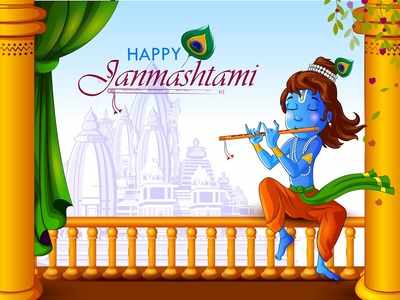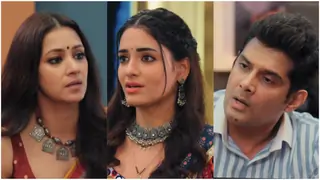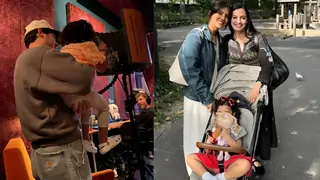
Janmashtami/Gokulashtami is one of the biggest festivals of India. It is the celebration of Lord Krishna’s janma (birth) on the Ashtami (eighth)day of the Bhadrapada (August-September) month. The number eight has another important significance in the story of Lord Krishna. Krishna is the eighth child of Devaki and Vasudev.

In the Dwapar Yuga, there used to live a cruel king called Kansa who used to rule over Mathura. He had a younger sister named Devaki. One day he got Devaki married to his friend King Vasudeva, ruler of the Surasena kingdom. After their marriage, Kansa suddenly heard a voice from the heavens that the eighth child of his sister is going to kill him and save the world from his atrocities. The evil Kansa got terrified and put Devaki and Vasudeva in prison. One by one he started killing all the babies that Devaki gave birth to.
On the eighth day of Bhadrapada month in the midnight Krishna, the incarnation of Lord Vishnu was born. Fearing that Kansa will kill this baby too, Devaki and Vasudeva started looking for ways to protect the baby. During that time, due to Krishna’s maya or magic, all the guards in the prison fell asleep, the prison doors opened wide and Vasudeva’s chains broke. Vasudeva decided to leave the divine baby in his cousin Nanda’s house in Gokul. Vasudeva placed the baby in a basket, kept the basket on his heard and left the prison. There was heavy storm in river Yamuna that night but still Vasudeva started crossing the Yamuna river. Lord Krishna again did maya and stopped the storm. Sheshnaag, the snake God protected baby Krishna from the heavy rainfall.
Finally Vasudeva reached Gokul and went to Nanda’s house. In his house he found Yashoda, Nanda’s wife had given birth to a baby girl and was fast asleep. Vasudeva kept the baby Krishna besides Yashoda and took the baby girl and left for Mathura. Thus, Lord Krishna lived in Gokul as Nanda and Yashoda’s son in Gokul and loved and care for them.

Celebration of Janmashtami
People celebrate this festival by keeping fast throughout the day, staying awake throughout the night singing devotional songs of Bal Krishna. They place Bal Krishna’s idol on a cradle and worship it. The devotees break their fast in the night by eating delicious sweets.

Janmashtami is celebrated with great pomp and fervor in North India, especially in Mathura, Vrindavan and surrounding places. The Krishna temples there are lit up and decorated with beautiful flowers. Devotees perform dance and dramas on Bal Krishna’s leelas and also Raas leela dressed as Krishna and his beloved Radha.

In Maharashtra, Janmashtami is popularly known as Gukulashtami. On this day, people break Dahi handis or earthen pots of yogurt. According to stories of Bal Krishna, Krishna used to love eating makhan or butter. All the people of Vrindavan used to hide the makhan inside earthen pots and tie them high up out of Krishna’s reach. Krishna used to take his friends help and ask them to make human pyramids, he would climb on them, break the matkis or pots and eat the makhan and share it with his friends. Thus, on this day dahi handis would be tied from ropes hanging from the second or third floor of buildings. Devotees would make human pyramids like Krishna and his friends, break the dahi handi and eat the yogurt.
This festival is celebrated with great excitement in Gujarat too where Lord Krishna had established the kingdom of Dwaraka. People visit the famous Dwarakadhish temple and perform poojas. In the Kutch region, farmers decorate their bullocks and take out a procession singing Krishna’s bhajans.

In the Eastern India, in states like Odisha and West Bengal, people celebrate the festival by fasting and singing Krishna bhajans. The next day of Janmashtami is called Nanda utsav and people worship the foster parents of Krishna, Nanda and Yashoda.
In South India also, people celebrate with great enthusiasm. In Tamil Nadu, people decorate their floors with kolam or a paste made of rice and water. In Andhra Pradesh, young boys are dressed up as Krishna and they visit neighbours and friends.
Janmashtami is celebrated in other countries too like Nepal, Bangladesh and Fiji.

Toh bolo,
Haathi Ghoda Paalki
Jai Kanhaiya Lal Ki!



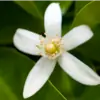



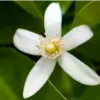




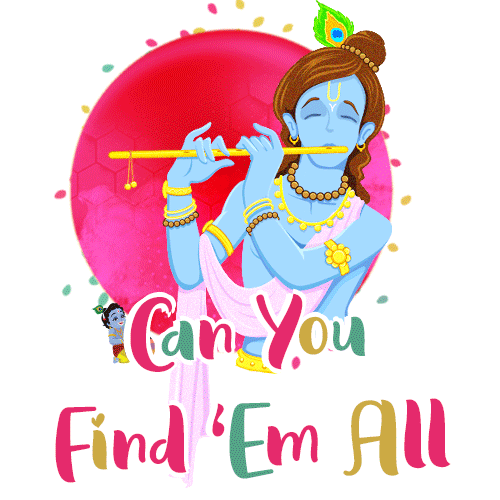






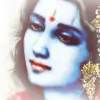









_1630234683522.jpg)





